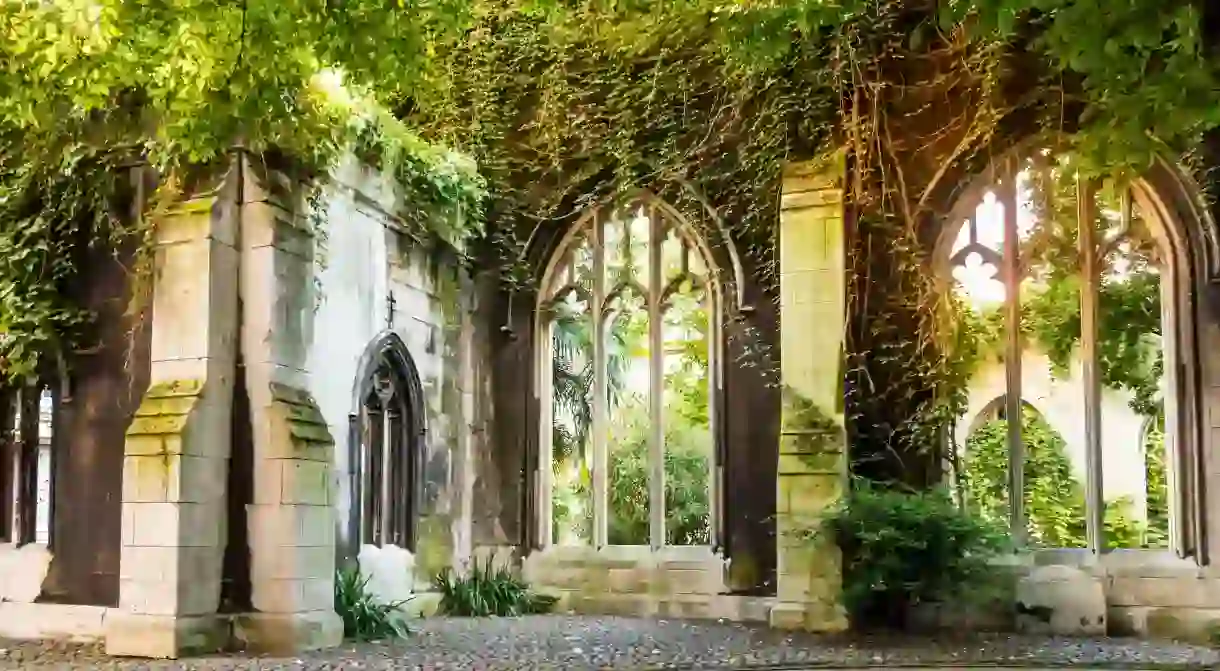A Guide to Lesser-Known Architectural Treasures in London

London has a lot of big name attractions but its weird and wonderful history is best discovered through architectural gems that aren’t on most tourists’ bucket list. Let us guide you around a London hidden in plain sight.
Did you know – Culture Trip now does bookable, small-group trips? Pick from authentic, immersive Epic Trips, compact and action-packed Mini Trips and sparkling, expansive Sailing Trips.
Nunhead Cemetery

Highgate Cemetery might hit it out of the park when it comes to famous burials, but overlooked Nunhead Cemetary has a wonderful Gothic style chapel. It was one of a series of ornate graveyards (called the Magnificent Seven) built on what was then the edge of London to cope with the booming population in the 19th century. Highgate was one, Nunhead (then called All Saints) was another. While it might not have the celeb graves, it does have a wonderful view over London to St Pauls.
St Pancras Clock Tower
Ditch Big Ben and the thousands of selfie sticks for another clock tower – but this one has the added advantage that you can sleep in it. Lover of Victorian Gothic, George Gilbert Scott started building it in 1866 and had to scale down its height after the railway company ran out of money. Today you can stay in the tower, take in views over the city of London and even explore the tiny room where the clock used to be wound by hand.
St Dunstan’s in the East
A few Gothic style ruins in the midst of a small public garden might not sound like an attraction but this ancient parish church survived the Great Fire of London in 1666, and was built 900 years ago. However, the church was bombed in 1941 in the Blitz and has remained standing as a testament to the wartime destruction of over a million homes.
London’s smallest police station
Scotland Yard might be a household name but this tiny police station is a lot more fun. Even London old timers don’t know it’s there – in the southeast corner of Trafalgar Square, hidden in plain sight. It was built in the 1930s to keep an eye on the odd rowdy drunk (and the pigeons) in the square and although it looks like it might be a Tardis, there’s only room for one person standing inside. Sadly you won’t see a bobby here any longer, it’s now a cupboard.
Masonic Temple at the Andaz London

Yes, yes, St Pauls has the Whispering Gallery but the St Andaz Hotel (adjacent to Liverpool St Station, a short walk from St Pauls) has a secret Masonic temple that’s over 100 years old. Originally the Great Eastern Hotel and one of the first hotels in London, the enormous marble covered room was discovered behind a fake wall when renovators moved in a few years ago. The Masonic lodge is one of the finest examples in London and features a blue and gold domed ceiling with zodiac and esoteric signs.
The city centre Roman amphitheatre
The Globe might have reconstructed an Elizabethan theatre but below the Guildhall Yard art gallery there lies an enormous 2,000 year old Roman amphitheatre. While the Roman find still lies beneath the courtyard, a semi circle black line was built into the floor to show where the ancient theatre lies.
Welbeck Street carpark
London has rather a lot of Brutalist architecture outside of the obvious example of the Barbican if you know where to look. One of the most surprising is a car park in Marylebone, on Welbeck Street. Its concrete polygons have been delighting modernism geeks since the 1970s but its future is in doubt after it failed to become a listed building last year.
Wilton’s Music Hall

London’s last remaining music hall is the oldest surviving music hall in the world and you can bet your bottom dollar that it has had much more of a riotous past than the Royal Albert Hall. Originally five ale houses, the hall began as a concert room in the mid 19th century and was thought to be where the Can Can was first performed in London and then promptly banned. It now runs local gigs, magic and performance nights and has a lovely bar.













